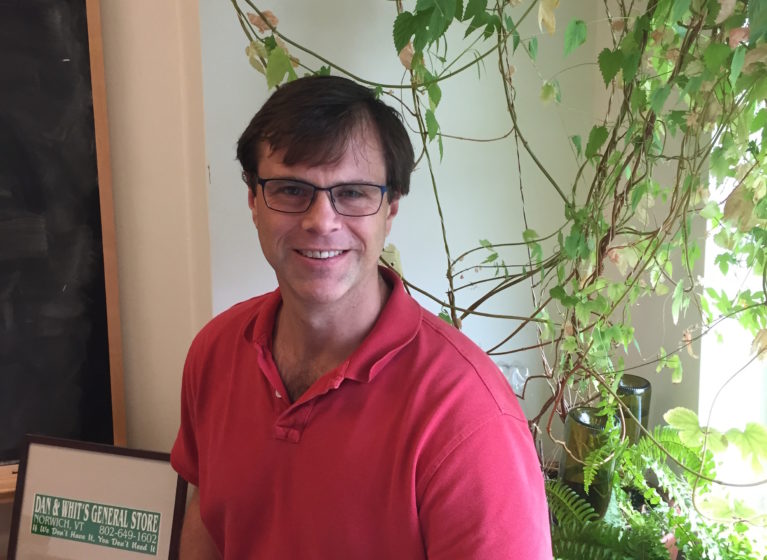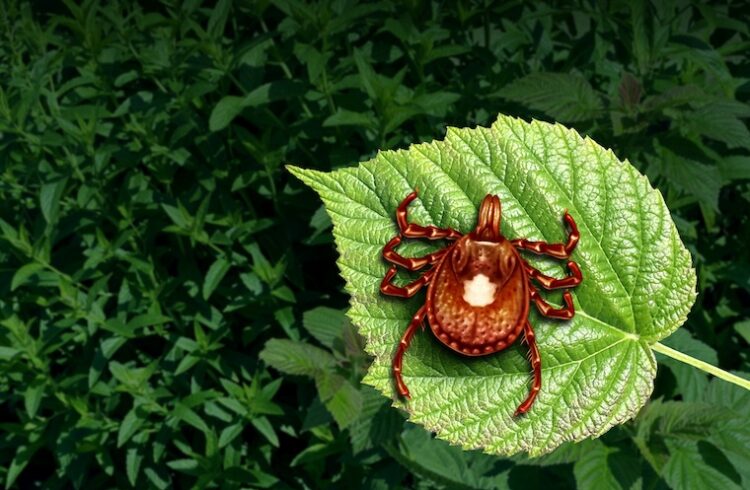
School of Medicine researcher Christopher Stroupe has his eye on six little molecules that could be the key to new treatments for both Ebola and cancer .
The molecules, which act together as a single unit known as HOPS, are essential for Ebola to infect cells and for cancer cells to grow and survive. As such, they represent a shared weakness – a weakness Stroupe is seeking to exploit.
To do that, he is creating a new tool to produce a purified form of HOPS that would facilitate the development of drugs targeting the molecules. By blocking HOPS in human cells, he hopes, doctors can cut the legs from under Ebola and cancer.
“If we have the opportunity to develop drugs that might target HOPS and prevent it from working, we might be able to make cancer cells less stable, less viable,” he said. “We won’t necessarily kill them outright, but we might make them more sensitive to existing treatments.”
A little about the lysosome
So what do HOPS actually do? For one thing, the protein molecules play a critical role in the functioning of the lysosome, an organelle inside cells that high school biology has long labeled the cellular garbage dump, where damaged materials were degraded. But Stroupe likens the lysosome more to a recycling center, where useful materials are repurposed, and that’s why targeting HOPS could be beneficial. Take cancer, for example:
“It turns out that this process of recycling in the lysosome is actually really important for cancer cells to survive. … Essentially, they’re eating themselves as they’re growing. They’re constantly recycling unused or damaged components, and they’re doing this at an elevated rate relative to normal cells,” Stroupe said. “On top of that, when we stress them even more, by giving them chemotherapy or radiation therapy, this process of recycling, of self-eating, becomes even more important.”
So by targeting HOPS, doctors could deny cancer cells the sustenance they need, making them more vulnerable to cancer-killing treatments. “These cancer cells are sort of teetering on the edge of being alive or dead, and this is why chemotherapy works,” Stroupe said. “It can take these cells that are sort of on the edge and kill them a little more efficiently than it kills all the other cells.”
Ebola: A master of manipulation
The Ebola virus, like all viruses, has evolved to hijack the internal workings of the cell in order to replicate and infect its host. Ebola takes a circuitous route as it invades cells, tunneling a path to the lysosome along the way. To do this, Ebola essentially hitches a ride on HOPS. And so Stroupe believes that drugs that block the action of HOPS may be not only powerful anti-cancer agents but also useful against Ebola. “There aren’t any drugs approved for use against Ebola yet,” Stroupe said. “And HOPS is a completely new target for antiviral drug development.”
NCI backing
Stroupe’s work is being funded by the National Institutes of Health’s National Cancer Institute. With that support, Stroupe hopes to fulfill the promise of decades of research that has provided our understanding of HOPS by examining its role in yeast. Stroupe aims to take that knowledge and translate it into humans, so that it can ultimately be used to battle disease and better the human condition. “This project really highlights the importance of funding basic research,” Stroupe said. “HOPS was discovered 30 years ago through fundamental studies of the internal structure of yeast cells, and only now are we developing the tools for using HOPS to attack human disease.”
Of course, it’s the nature of science that things don’t always turn out as planned, and Stroupe, an assistant professor in UVA’s Department of Molecular Physiology and Biological Physics, knows that. “The path to developing new drugs is difficult and usually ends in failure. But even so, it’s likely that we will find new tools to help us understand, in greater detail, what is going on inside a cell,” Stroupe said. “We simply can’t predict where these lines of research are going to go. Regardless of what comes of this, I think it’s a very exciting new avenue.”



